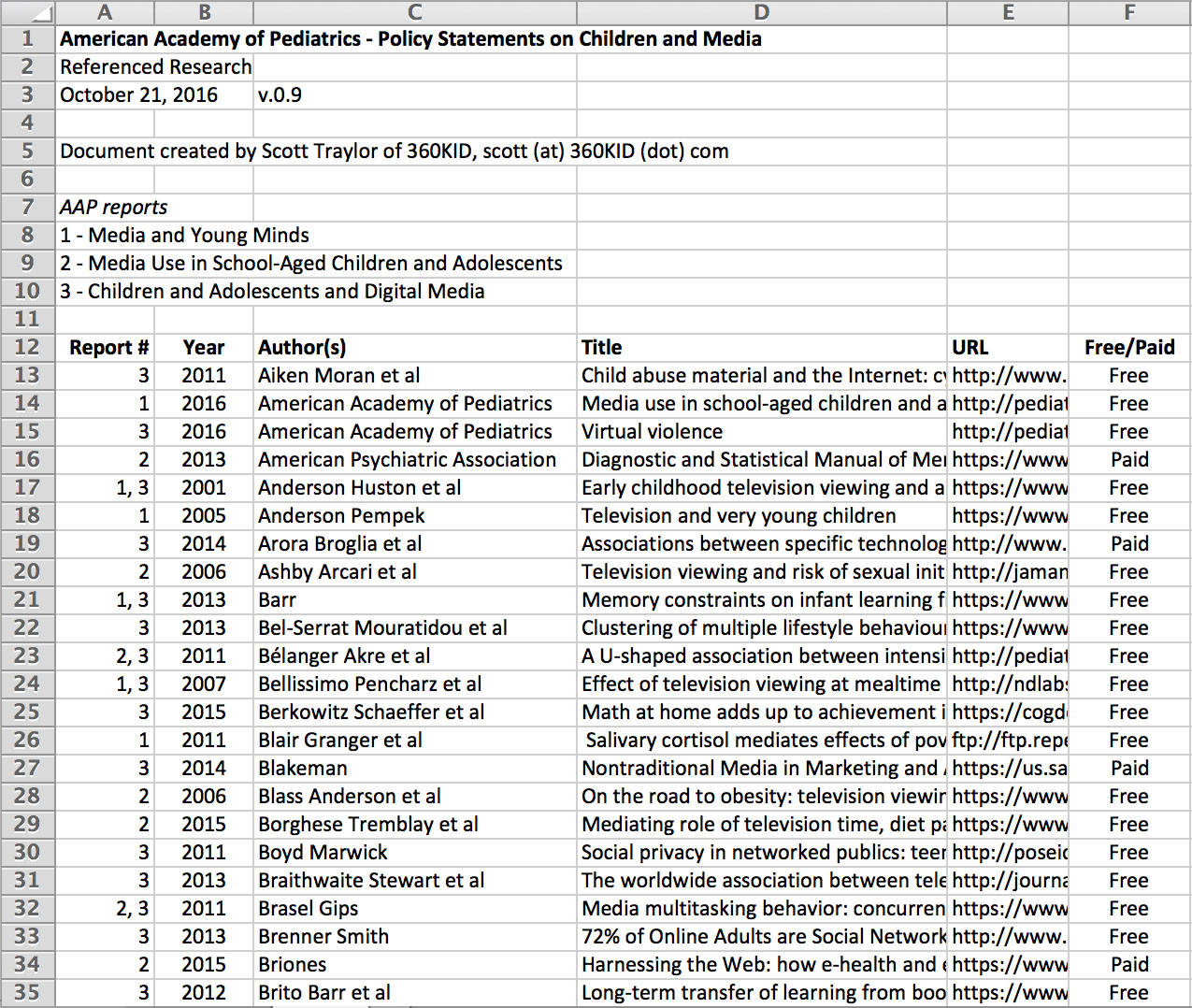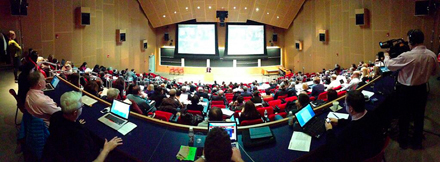Friday, October 28th, 2016
[The following is a feature article I wrote for the online magazine Kidscreen, October 21, 2016.]
The American Academy of Pediatrics (AAP) has a long history of providing recommendations to parents on how best to raise healthy children. Nearly two decades ago, the AAP began outlining stipulations regarding appropriate media usage for kids. In earlier days, that meant mostly television. Today, as we are well aware, kids’ media consumption extends to mobile devices—and oftentimes begins at the tender age of six months.
So, it’s safe to say change is in the air. Last fall, the AAP revised its media guidelines to be more in sync with family life, effectively letting go of the once-held belief that kids under the age of two should completely abstain from screens. Which brings us to today.
Of the three policy statements released at the AAP National Conference in San Francisco this morning, the association’s latest recommendations for parents with young children include:
- No media use at all for children under 18 months. The only exception to this recommendation is if families use Skype or FaceTime to stay connected with one another, as long as parental support is included as part of this screen time activity.
- Parent co-viewing and shared media use is vitally important among 1.5- to two-year-olds. Research has still yet to demonstrate the benefits of media use for children under the age of two, but there appears to be learning benefits, as long as a parent is actively engaged in the co-viewing experience.
- Limit media use to no more than one hour per day for children ages two to five. During this time, parents should be encouraging high-quality educational and pro-social media content, and should continue to participate in the media experience with their child as they grow to help them understand what he or she is seeing.
- Make sure media use does not replace non-media activities like outdoor play, social time with friends and family, and reading together. Parents are urged to take time away from screened media to do other things with their child.
- No media use one hour before bedtime. Studies show children sleep better when they are not engaged in media before bedtime.
Given the rapid advancement of digital media businesses and services, the AAP has been challenged to offer timely research-based guidance to parents and pediatricians. In looking through the list of 191 referenced articles and research reports mentioned across the three AAP policy statements, you see a lot of new research, with almost 30% of referenced research released since 2015. For a list of all referenced research, and links to download free and paid research, click here.
As a developer, I’m inclined to call out some missing and important parts of kids’ digital media usage: Are interactive screens any better or worse for young children than passive screens? Is passive television viewing worse for a child than a mobile learning game, or connecting with a family member on a tablet using Skype? The answers, as of today, continue to be elusive.
The reality is that screens are everywhere, not all screens are created equal, and most people use them heavily throughout their day.
One 2015 study (Kabali et al) referenced in the AAP documents showed most two year olds in the US use a mobile device on a daily basis, and most one year olds (92%) have used a mobile device. Collectively, 96% of all children ages zero to four have used mobile devices. This data is striking, but especially noteworthy when compared to a 2013 Common Sense Media report (Rideout et al). During the two years between when these studies were conducted, television screen time dropped and mobile screen time quadrupled for this age group. Would you call this a media tipping point? And what recommendations does the AAP have for media creators?
To that end:
- The AAP asks developers to avoid making any apps for children under 18 months of age.
- When creating new products, work with a developmental psychologist and an educator to help advise age-appropriate content and digital engagement.
- Design media products for a dual audience, so parents and children can enjoy a shared media experience together.
- Provide appropriate, responsive and authentic feedback to the child through your product.
- Do not include any advertisements. Children of this age group can’t tell the difference between content meant for them or an ad.
- Formally test your product for educational value before promoting educational claims.
- Consider adding parent dashboards or preference areas where a parent can find helpful feedback on their child’s use of the product and/or customize the experience to monitor and limit overall time being used.
The amount of research and information reviewed by the AAP and synthesized across the three policy documents is impressive, and a helpful benchmark for parents, pediatricians and media creators alike. As this ever-evolving conversation continues in the months and years ahead, there will always be a great need for more research that looks at content as well as the latest distribution methods.
Scott Traylor is the founder of 360KID and a consultant to many children’s interactive businesses and products (none of which are referenced in this article). He’s also a former computer science teacher and currently lives in Silicon Valley, searching for the next big opportunity in the children’s industry. Scott can be reached at Scott@360KID.com.




